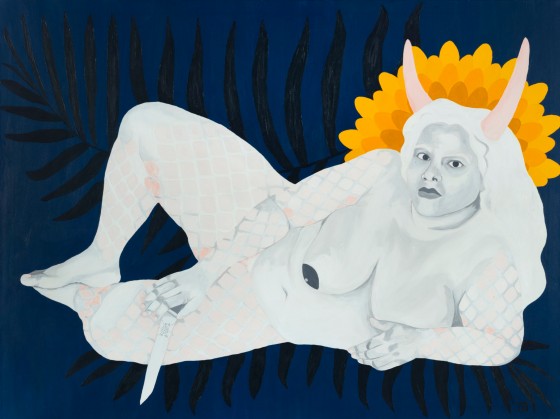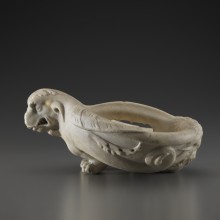
February 2020 Fine Arts
T 1946–9 by Hans Hartung
As the major retrospective at the Musée d’Art moderne de la ville de Paris draws to a close, another exhibition showcasing the work of Hans Hartung is currently in preparation. Opening at the Caen Memorial Museum on 14 July 2020, the exhibition La Liberation de la peinture, 1945-1962 aims to capture the tremendous momentum driving the European abstract avant-garde, firmly resolved, after the end of the Second World War, to change the course of art forever. T 1946-9 is one of the signature artworks of this creative and contagious euphoria that swept away everything in its path.
See the artwork in the collectionHans HARTUNG
T 1946–9
1946
Oil on canva
Signed and dated « Hartung 46 » at the bottom left
99,5 x 64,8 cm
FGA-BA-HARTU-0008
PROVENANCE
Galerie Lydia Conti, Paris
Galerie Jean Krugier, Genève (sous le titre « Composition Abstraite »)
Galerie Ariel, Paris
Darga & Lansberg Galerie, Paris
Christie’s, Paris, 11 Décembre 2007, lot n°16
Firstly, its title, sober as an inventory number1 still conveys the essentials: the artwork dates from 1946, a decisive year because a pivotal one in Hans Hartung’s life and work. It brought to a close the vicious cycle of violence and hardships endured by the artist in wartime. The recently ended war had not spared him, sending him back to civilian life with his right leg amputated2. 1946 was also a year of transition when the German painter, who had only just been granted French nationality, rediscovered his appetite for work and met with his first critical successes in galleries3. Critics praised the lyricism of his painting and understood that it was about to radically transform abstract art within the second School of Paris.
T 1946–9 is an eloquent expression of the artist’s state of mind in the aftermath of the Second World War. The dynamic composition, just like the work’s vigorous execution, mirrors the artist when he says: “My drawings were crossed by twisted, strange, entangled lines, resembling desperate scratches […] it was vehement and rebellious painting. Like myself."4 Large black strokes thus slice across the entire height of the canvas. They have all the immediate energy of the lightning flashes that the young Hartung was already drawing in his school notebooks. These graphic flares fence with other, less emphatic lines spinning around on the azure ground of the canvas. This spasmodic gestural language is tempered by blocks of compact hatching that structure the whole. Their uniform colours and muted tones reinforce the overall impression of restraint. This was dictated by Hans Hartung's perpetual quest for the "right tone that creates harmony"5. This requirement came from his admiration for the "clarity of Cubism" 6 and from his childhood spent with his musician grandfather. "At home, music was in the very air that we breathed"7, recalls Hartung. T 1946-9, with its syncopated rhythms and simple colour harmonies, is an eminently musical composition. With its simultaneously accordant and dissonant notes, it embodies the contrasts and paradoxes of a society that was healing its wounds while once more turning its attention towards the future. In this respect, "no painting seems to us more realistic in spirit than Hartung’s abstract art"8, wrote art critic Madeleine Rousseau (1895-1980), on the occasion of the opening of the Galerie Lydia Conti in Paris in 1947.
Two geometric shapes emerge from the interwoven, disorderly lines: a rectangle and a circle. They are there to remind the artist, as well as the viewer, of the coexistence of the order and chaos that govern the universe9. T 1946-9, through its balanced lyricism, reflects the dual nature of the artist, both Dionysian and Apollonian. This never-ending struggle between two opposing states gives rise to a unique form of abstraction which appeals above all to sensitivity and pure emotion.
Bertrand Dumas
Curator of the Fine Arts Collection
Fondation Gandur pour l'Art, february 2020
Notes and references
- T 1946-9 follows the nomenclature established by Hans Hartung for the titles of his artworks. After the letter "T" for “tableau” (painting), comes the year of creation and the work’s number in that year’s chronology. This method aimed to prevent any interpretation before the work was actually seen.
- Operation following a bullet wound to his knee during the attack on Belfort in November 1944. He was awarded the Croix de guerre (War Cross) by the French military for his heroic conduct.
- In 1946, Hartung took part in several group exhibitions in Parisian galleries, including those of Denise René and Colette Allendy, where his paintings attracted the attention of art critics Léon Degan, Charles Estienne and Madeleine Rousseau.
- Hans Hartung, Autoportrait, compiled by Monique Lefebvre, Paris, Grasset éditions, 1976. The present text is based on the new critical edition by the Fondation Hartung-Bergman, published by Les presses du réel, Dijon, 2016.
- op.cit. p. 128
- op. cit. p. 125. To attain the "clarity of Cubism", Hartung studied the possibilities of the golden section (or golden ratio). This geometric relationship was popular with the Cubists, who turned it into a method. Hartung used it for the first time in a drawing of 1929. On his in-depth study of it, see op. cit., p. 98 and note 14, pp. 109-110.
- op.cit. p. 23
- Preface to the "Hartung" exhibition catalogue published by the Galerie Lydia Conti, Paris, 1947. This inaugural exhibition was held from 14 February to 8 March 1947. It comprised thirteen paintings, including three dating from 1946.
- op.cit. p. 13. In his preface to the critical edition of Autoportrait, Thomas Schlesser underlines in Hartung's work "the obsessive expression of a connection to the dynamic forces of the universe".
Bibliography
Hans Hartung, Autoportrait, compiled by Monique Lefebvre, Paris, Grasset éditions, 1976. The present text is based on the new critical edition by the Fondation Hartung-Bergman, published by Les presses du réel, Dijon, 2016.
Preface to the "Hartung" exhibition catalogue published by the Galerie Lydia Conti, Paris, 1947. This inaugural exhibition was held from 14 February to 8 March 1947. It comprised thirteen paintings, including three dating from 1946.








